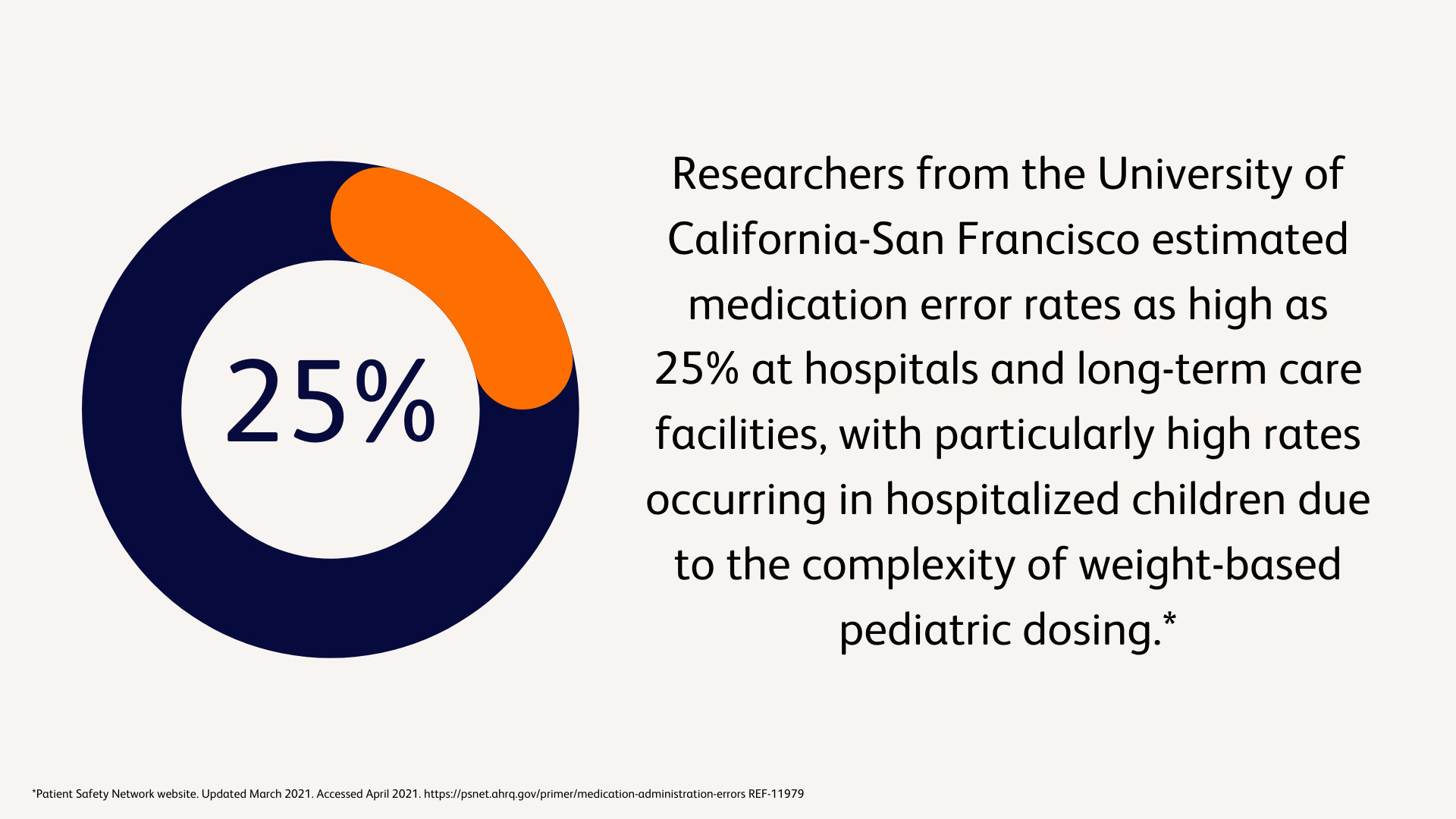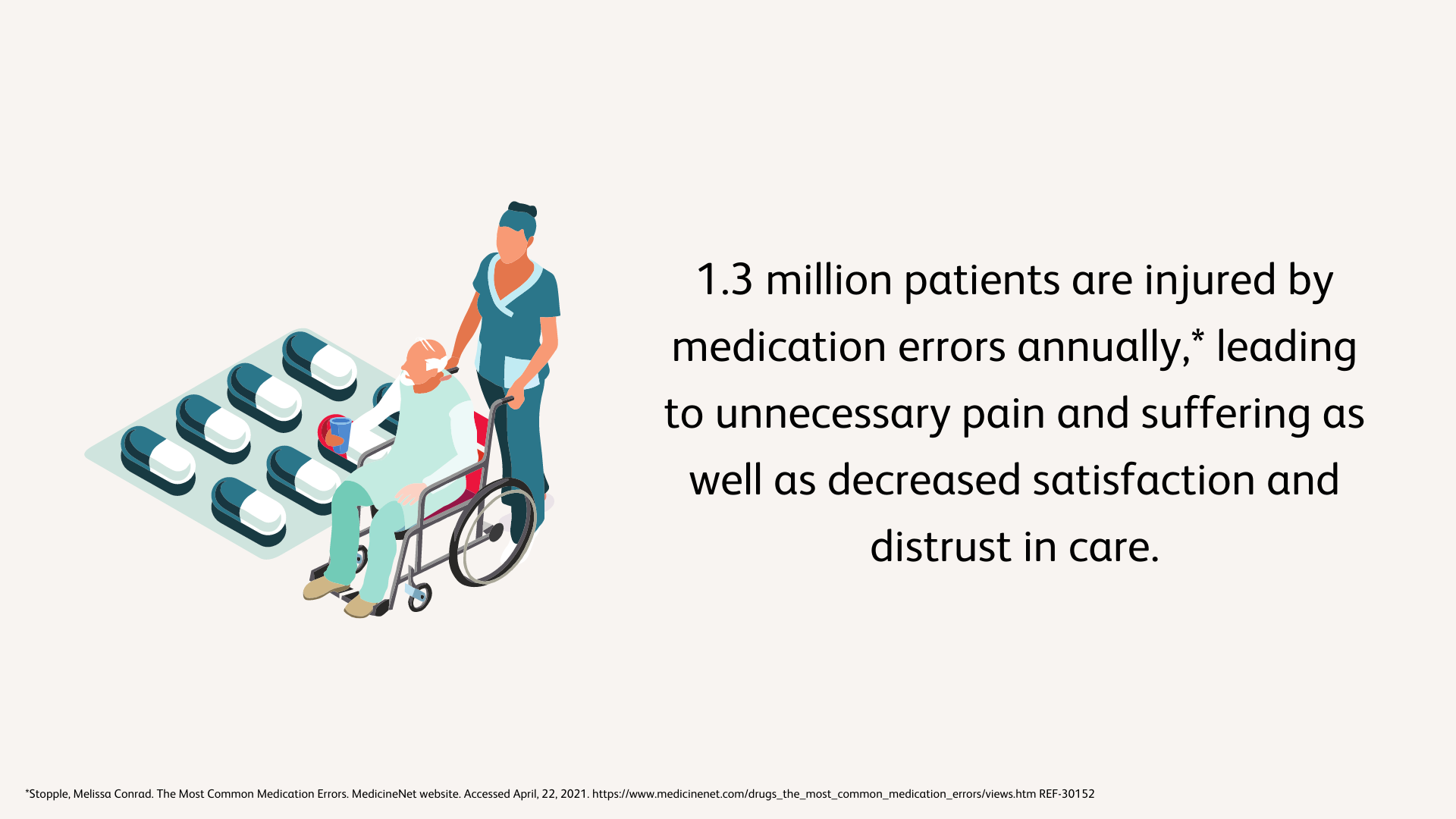Harnessing data to prevent medication errors and manage inventory may be easier than you think
By Kalvin Yu, MD, FIDSA, Vice President, Medical Affairs, U.S. Region, BD
A woman with Type 1 diabetes is admitted to the hospital following a seizure brought on by diabetic shock. The patient’s medical team has stabilized her blood glucose which is currently above normal. While she’s clinically improved, he sees the higher blood sugar levels and is concerned that the patient has a history of diabetic ketoacidosis and leaves orders to recheck the blood glucose and if it rises further, for the patient to receive 10U of insulin, abbreviating units. When a new nurse arrived to start his shift, he asks the patient to learn more about her situation, but quickly discovers she’s unable to communicate. He reviews the doctor’s orders and administers what he believed to be an order for 100 units of insulin. It didn’t take long for insulin shock to set in. Despite the medical team’s best efforts, they couldn’t save her in her weakened condition.
This is just one story[1] behind the 7,000-9,000 patients estimated to die due to medication errors each year in the United States alone.[2] Researchers from the University of California-San Francisco estimated medication error rates as high as 25% at hospitals and long-term care facilities, with particularly high rates occurring in hospitalized children due to the complexity of weight-based pediatric dosing.[3]
For the more than 7 million patients impacted by medication errors each year in the United States, the vast majority of mistakes aren’t lethal. However, 1.3 million patients are injured by medication errors annually,[4] leading to unnecessary pain and suffering as well as decreased satisfaction and distrust in care. In addition to the mental and physical toll on patients and clinicians, care related to medication errors is estimated to cost in excess of $40 billion per year. 2
Building in safeguards to stop medication errors
Perhaps most importantly, many medication errors are preventable, but the rapid transformation of healthcare has made it harder for healthcare professionals (HCPs) to prevent them on their own. The challenges HCPs are combating are increasingly difficult to manage.
HCPs do incredible work under tremendous pressures amid a healthcare landscape that is shifting to the increasingly popular value-based care model, in which hospitals are expected to deliver better outcomes at lower cost, with payment tied to performance[5]. In addition, newer technology in testing and diagnostics has increased the volume of information that clinicians must synthesize to make treatment decisions. Challenging and evolving documentation requirements, as well as administration duties like inventory management, take time away from the bedside. Staffing shortages and long shifts leave tired HCPs vulnerable to human error, such as confusing a prescription name, misreading a dosage or improperly documenting medication history. Hospital clinicians are treating a higher percentage of patients with acute needs as more non-acute care shifts to other facilities or patient homes.
Given these growing complexities in care, there is an opportunity to help protect patients and HCPs from medication errors by connecting medication management touchpoints across the care continuum. A truly connected medication management ecosystem harnesses data and software innovation to build more safeguards and can enhance medication management.
Connecting key solutions that combine physician decisions with pharmacist workflows—such as IV workflow management systems and automated dispensing cabinets—into a digital ecosystem that supports timely and clinically actionable insights would be ideal. Layering on pharmacy analytics software that works in tandem with electronic medical records (EMRs) to provide visibility across medication management systems to help reduce medication errors.
Advancing organizational medication strategy through data-driven insights
Truly connected medication management can do so much more than help prevent medication errors. With comprehensive medication and supply management throughout a healthcare system, previously siloed troves of data related to hospital supply, prescriptions, antimicrobial usage, infection rates and drug diversion can now be aggregated to provide an actionable picture of medication management from the individual patient to the pan-hospital level. This can help HCPs address evolving challenges such as:
- Antimicrobial resistance and healthcare-associated infections (HAIs): There are nearly 2 million HAIs per year in the United States alone.2 As we increasingly acknowledge the dangers of antibiotic misuse and the rise of “superbugs”, it’s more critical than ever that prescribers accurately identify the cause of illness to help ensure they prescribe the right treatment. Use of the appropriate therapies will not only help patients achieve better outcomes faster but may minimize the opportunity for new resistant bacteria to emerge and while helping to preserve the effectiveness of antimicrobial drugs[6].
- Opacity in the medication management chain throughout the hospital: A general lack of transparency as medications move from procurement to the bedside through a patient’s care results in several related challenges.
- Inventory optimization: When the COVID-19 crisis hit, supply chain issues followed shortly after. Organizations all over the world became acutely aware of the disadvantages of a “just-in-time” inventory supply. Medication and supply shortages put individual patients at risk and limited the healthcare industry’s ability to scale care with the growing crisis[7].
More specifically, when New York City became the epicenter of the pandemic in the U.S. in the spring of 2020, healthcare systems like the University of Rochester Medical Center turned to BD HealthSight™ to optimize inventory and manage medication shortages. “What was very valuable during COVID was the ability to access near-real-time data, assess medication stocks, and adjust PAR levels based on the type of patient moving into those ICUs and Non-ICU areas,” said David Webster, RPh, MSBA, Director of Acute Care Pharmacy Operations, Assistant Professor of Clinical Community and Preventative Medicine, University of Rochester, Strong Memorial Hospital.[8]
- Inventory optimization: When the COVID-19 crisis hit, supply chain issues followed shortly after. Organizations all over the world became acutely aware of the disadvantages of a “just-in-time” inventory supply. Medication and supply shortages put individual patients at risk and limited the healthcare industry’s ability to scale care with the growing crisis[7].
- Drug diversion detection: Hospital drug diversion, when a healthcare worker diverts opiates and other controlled substances away from patients for personal use or sale, remains a significant, and largely underdiscussed, challenge. Left undetected, diversion can imperil patient safety, harm diverters, and generate significant risks and cost for hospitals. A survey of 650 hospital executives outlines complexities that make it a challenging problem to address. Between 10-15% of the general population misuses substances in their lives, including health care providers with access to controlled substances.[9] Survey data supports anecdotal observations that health care providers are often stressed beyond their ability to cope, and in the midst of pandemic and surge capacity situations, the demands vastly increase. Data transparency, made possible through a connected medication management ecosystem, is critical in identifying a challenge that poses severe risks to patients and clinicians, and heightened liability to care facilities.
- Workflow efficiency and effectiveness improvement: 93% of materials managers state their health system organizations suffer from poor inventory control technology and processes that typically result in overstocking, high supply and labor costs[10]. This can frustrate nursing staff who may spend up to 38% of their time on nonvalue-added activities: searching for medications that are unavailable, delayed documentation and unnecessary or redundant communication.[11]
- Not only can a robust medication management platform improve efficiencies in pharmacist and technician workflows related to inventory replenishment, it can also signal which types of patients are being preferentially admitted and what related high-impact medications are being used. This may help provide signals of stock outage risks for key medications during surge capacity situations, such as those seen during the COVID-19 pandemic[12]. Platforms that can aggregate and highlight the information most critical for HCPS throughout the medication management spectrum via clinical and operational dashboards can be designed to help them work more effectively and at the top of their licenses. For example, the University of Rochester Medical Center was able to reduce their up to three-times-per-day drug delivery to devices down to one and make great strides in mitigating staff frustration and confusion.
Big innovation in medication management. Bigger outcomes for patients and HCPs.
Eliminating errors through innovations in connected devices and software may save lives, increases trust in the healthcare system and potentially reduces costs to patients and care facilities. Patients can go home healthy, more quickly, if medication errors and HAIs never happen. HCPs and administrators can feel more confident and satisfied in their jobs, knowing they can better anticipate the impact created by surge capacity and crisis situations. And they’ll be better prepared to respond to stockouts, supply shortages, drug diversion and outbreak situations.
Learn how to manage medication and supply inventory and help reduce medication errors across healthcare systems with BD Connected Medication Management solutions at bd.com.
BD-36905
[1]Argo AL, Cox KK, Kelly WN. The Ten Most Common Lethal Medication Errors in Hospital Patients. Hospital Pharmacy. 2000;35(5):470-474. doi:10.1177/001857870003500512 REF-30153
[2] Tariq RA, Vashisht R, Sinha A, et al. Medication Dispensing Errors And Prevention. [Updated 2021 Feb 16]. In: StatPearls [Internet]. Treasure Island (FL): StatPearls Publishing; 2021 Jan-. Accessed April 22, 2021. https://www.ncbi.nlm.nih.gov/books/NBK519065/ REF-29111
[3] Patient Safety Network website. Updated March 2021. Accessed April 2021. https://psnet.ahrq.gov/primer/medication-administration-errors REF-11979
[4] Stopple, Melissa Conrad. The Most Common Medication Errors. MedicineNet website. Accessed April, 22, 2021. https://www.medicinenet.com/drugs_the_most_common_medication_errors/views.htm REF-30152
[6] Association between fluoroquinolone utilization rates and susceptibilities of gram-negative bacilli: Results from an 8-year intervention by an antibiotic stewardship program in an inner-city United States hospital. REF-30155 https://doi.org/10.1177/00368504211011876
[7] CDC, “Drug Diversion” Reviewed November 26, 2019. Accessed June 16, 2021. REF-30156 https://www.cdc.gov/injectionsafety/drugdiversion/index.html#:~:text=When%20prescription%20medicines%20are%20obtained,use%20put%20patients%20at%20risk
[8] Webster, David, “From Big Data to Results: Accelerating and Sustaining Medication Optimization,”
University of Rochester, June 24, 2020. REF-13741 https://event.webcasts.com/starthere.jsp?ei=1327622&tp_key=ce56e03da4
[9] Baldisserri MR. Impaired healthcare professional. Crit Care Med. 2007;35(suppl):S106-16. REF-5400
[10] Black Book Market Research LLC. (2016, December 13). Hospitals Remain Underinvested in Costing Technologies, Black Book ERP Survey Results. PR Newswire. https:// www.prnewswire.com/news-releases/hospitals-remain-underinvested-in-costing-technologies-black-book-erp-survey-results-300377359.html REF-18760
[11] Allen, Stephanie PhD, RN. (2015.) The Connection Between Nurses Working at Top of Licensure and Patient Care. Infor Healthcare. Retrieved from http://www.infor.com/content/executive-briefs/connection-between-nurses-working-at-top-of-licensure-and-patient-care.pdf REF-3828
Subscribe to receive BD blog alerts

